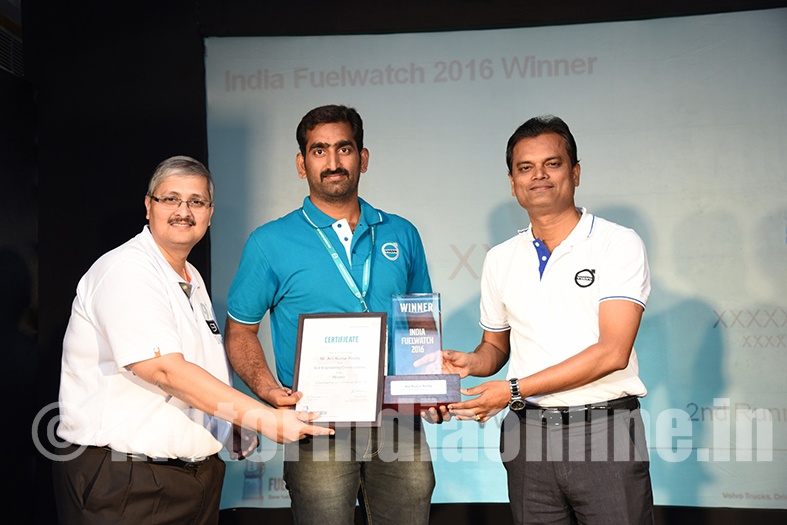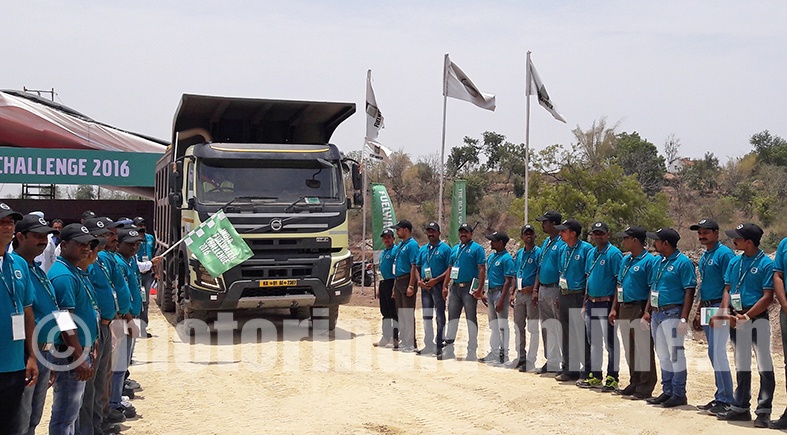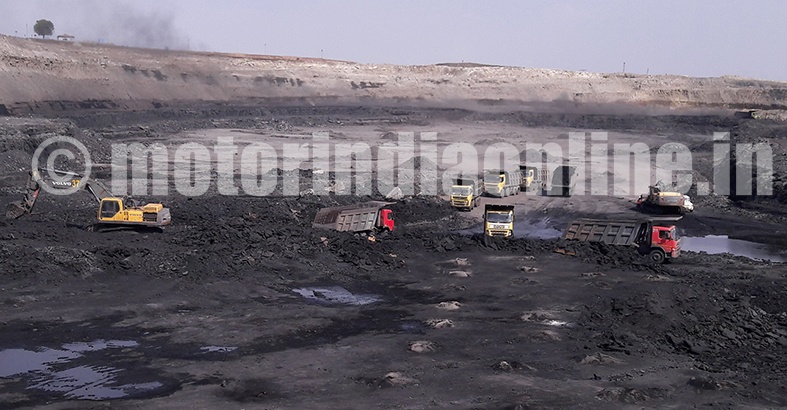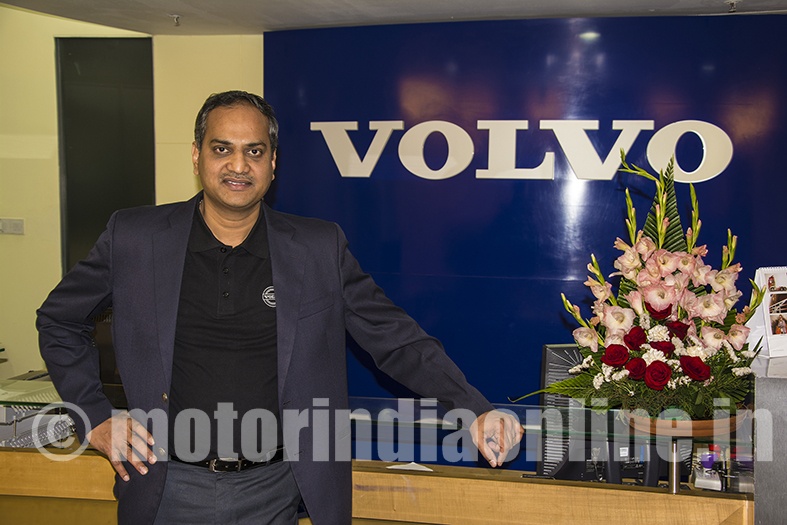Anil Kumare Reddy from S V Engineering Constructions, Telangana, won the seventh Volvo Trucks India Fuel Watch championship. He went on to represent India in the Asia-Pacific finals held in Gothenburg, Sweden earlier this month where he finished as Runner-up (a detailed report on the Asia-Pacific Fuel Watch Competition would be carried in our next edition).
The annual Fuel Watch event was held at Umred coal mines, near Nagpur. A total of 30 of the most fuel-efficient drivers from across India contested in the final round. The regional rounds had seen participation from 230 drivers across India.
Highlighting the importance of the Fuel Watch event to Volvo Trucks, Mr. G.V. Rao, Director – Product, Brand & Marketing, Volvo Trucks India, said: “We at Volvo Trucks are firmly committed to the Fuel Watch mission of optimising performance at minimum cost to customer operations, society and the environment.”
The goal over the years, of the competition has been to sensitise the drivers and customers towards fuel efficiency and the driver’s role in the same. Asked whether the Fuel Watch competition still remains attractive for the drivers and the companies participating even seven years after the first edition was conducted, he said: “Set in a competitive environment, this event has been generating a lot of excitement among the driver fraternity and they look forward to compete and win the title each year.”
Fuel saver wins
Volvo Trucks is the technology leader globally in the high performance heavy duty trucks. While the company has done a lot on the technology front to ensure a high level of fuel efficiency, the role of the driver cannot be discounted. This is not a competition where the one who finishes first is the winner, but the one who is the most fuel efficient is the winner.
“Fuel alone accounts for 50 per cent of the operational expense in the mining industry. The difference in fuel economy between the winner and the runner-up is around 2.4 per cent. It is incredible to see the difference in the fuel economy recorded between the winner and the last contestant. Sometimes, it is as high as 20-25 per cent. It is the skill of the driver to manoeuvre the vehicle across the mining terrain and keeping a balance between acceleration and braking that decides the best fuel economy,” revealed Mr. GV Rao.
Driver engagement
Speaking about the event, Mr. Rama Rao AS, Executive Vice president, VE Commercial Vehicles, said: “Customers highly appreciate this initiative from Volvo Trucks. This is the seventh consecutive year that Volvo Trucks is conducting. Customers understand that if the drivers drive well, they tend to be more profitable. Therefore, we see a high level of involvement, participation and encouragement from our customers. Our driver training centre in Bangalore continuously trains drivers both in Bangalore and at customers’ mine sites.”
He added: “The centre point of driver training is fuel efficiency. We have till date trained around 50,000 truck drivers. Since our inaugural event in 2009, hundreds of driver participants of the Fuelwatch Challenge have become ambassadors of the Fuelwatch community, sharing the skills and technical knowledge that they have picked up at the event to catalyse our goal of a fuel-efficient industry. Together with them, we look forward to championing the Fuelwatch mission for the industry and the society.”

The drivers too had a great time competing at the event. To find themselves amongst the top 30 most fuel-efficient drivers in the country gave them a sense of achievement. They drove the Volvo FMX 440 8×4 Tipper trucks across a designated 4km track that had been created in the premises of the mine. Each driver drove one laden and one unladen on both manual transmission (14 forward gears) and i-shift variant automatic transmission (12 forward gears) of the Volvo FMX 400 truck. The fuel economy was recorded by the on-board telematics system Dynafleet, and the average of all the four runs was used to decide the winner.
“Some of our trucks operate for around 6800 to 6900 hours a year”
– Rama Rao AS, Executive Vice President, VE Commercial Vehicles
We know Volvo India Fuel Watch is all about helping drivers of your customers achieve better fuel efficiency. Does this also help Volvo position itself as a premium brand that cares about customer’s Total Cost of Operation each year?
Yes. First of all, the product (Volvo Trucks) is great. The customers are realizing that the margins in their business are under stress. So how to save expenses in the operational cost is under everybody’s radar. Over the years we have seen a lot of customers showing interest in their driver’s performance. This means the owners are keen on this event and are actually following the progress of their drivers. Each year different drivers are nominated for the event. This shows that Volvo India Fuel Watch is a much talked about event in the customer’s organisation. We are doing whatever technological advancements in our trucks to help the trucks become better with technologies like I-Shift, I-shift crawler gears, better cabin comforts, etc. But customers realise that for them to take the full advantage of the product they too have to work on parameters that can help them grow in their business. In a nut-shell, today our customers look beyond the product and encourage us to enhance driver skills and help them achieve their utmost peak.
Clearly there is this one area of improving drivers and measuring their progress and then there is another area that you look after which is aftermarket support. Could you please spell out what do you have on offer for your customers at the mining site and off the site?
Our focus is to bring the highest possible uptime for the customers. We have program for preventive maintenance as well as serious maintenance. We help them how to optimize the load, how to maintain the roads and to actually plan the mines. All of these will benefit the truck. If you have too much of uneven roads, drivers find it difficult to maintain an average speed. So we do this on regular basis with our customers to help them take the full advantage of our well-built trucks. So we use our 17 years’ experience in India to help the customers to gain best uptime from our trucks.
So when you market your trucks and the whole package with the measurements you have derived, do you give them a time period in which they can achieve break even?
See the commercial viability or say the Total Cost of Ownership for a customer who buys a premium Volvo Truck is that they should able to provide sufficient work. If a truck is not operated round the clock due to lack of work than obviously a customer will find it challenging to repay the EMIs. So sufficient work is fundamental to own a Volvo Truck, and not like the owner of on-road truck who is able to pay the EMIs even if a truck runs around 10 hours a day. To set new records, our trucks with some of the customers are doing approximately 6800 to 6900 hours a year which a few years ago was unbelievable. This helps them achieve the breakeven much earlier. This is possible due to factors like customer’s maturity in doing the business and using the truck, maintenance free (interventions) run of trucks. Earlier like every 250 hours we said the truck would need oil change. Now we say it can go upto 1000 hours. The truck is built in such a way that the durability of various components like suspension, transmission, engines, gearbox, etc., has seen substantial increase and need lesser interventions. Our relationships with customers helped us bring different variants and newer innovations to our trucks.
Since you represent the VECV distribution arm, how do you help customers demarcate between the Volvo Trucks and an Eicher product like the Pro series that you displayed at Excon?
VECV is the distribution arm of the Volvo Group Trucks Operations, and I represent the distribution arm. Eicher represents an end-to-end commercial vehicle business within VECV. So VECV takes products from the Volvo Group and takes it to the customers who have very severe mining requirements. Eicher is gaining a lot from the Volvo Group in terms of developing their products and cater to a clearly different segment. Even if you see a Pro 8000 series in a mine it may not be as severe as the one in the premium Volvo truck operates or it may be doing only the coal transportation and not carrying the overburden. So we try and keep this clear demarcation as it caters to different value segment. Each brand has a different approach to the market and we do not compete with each other but complement each other.


